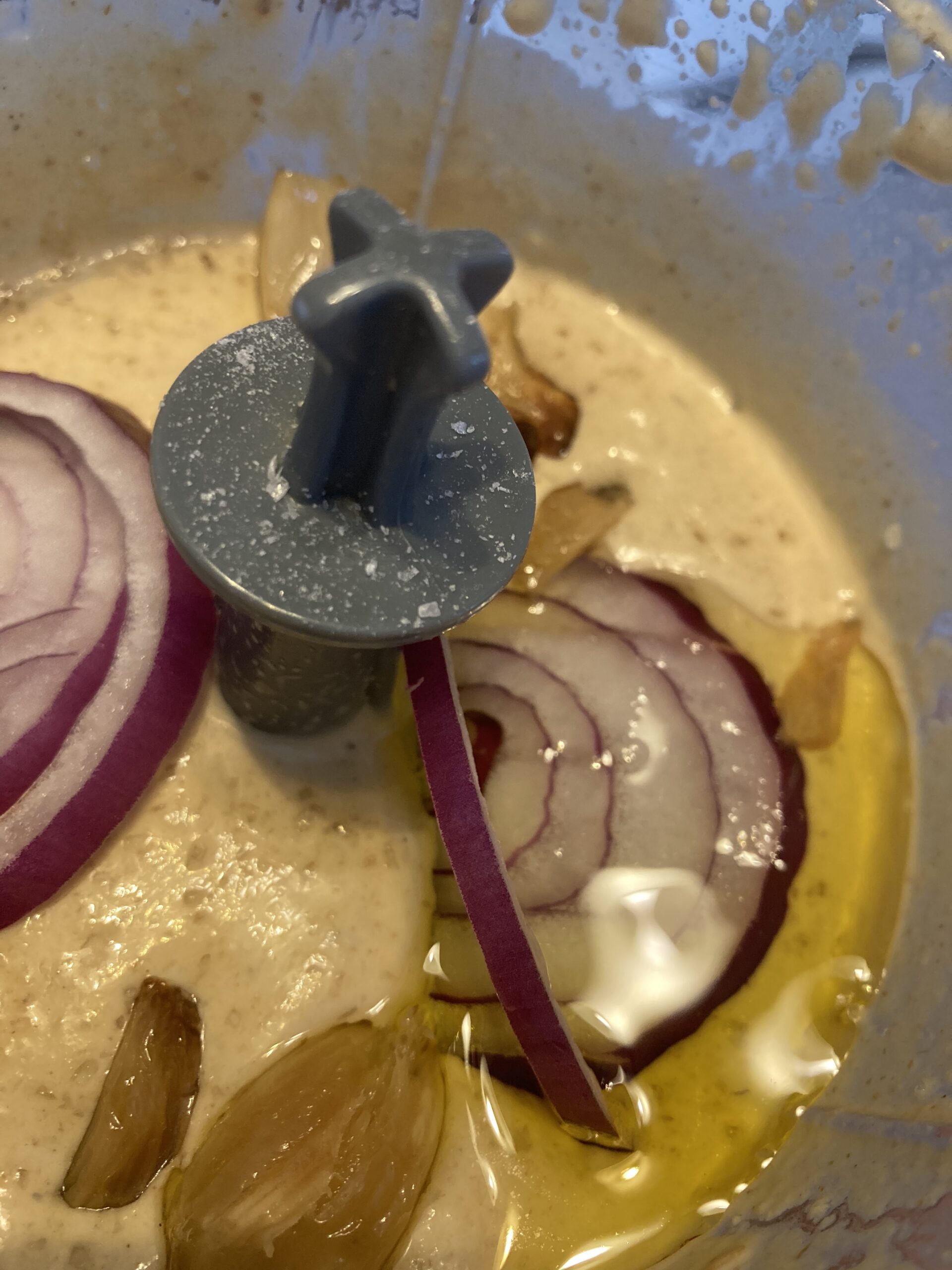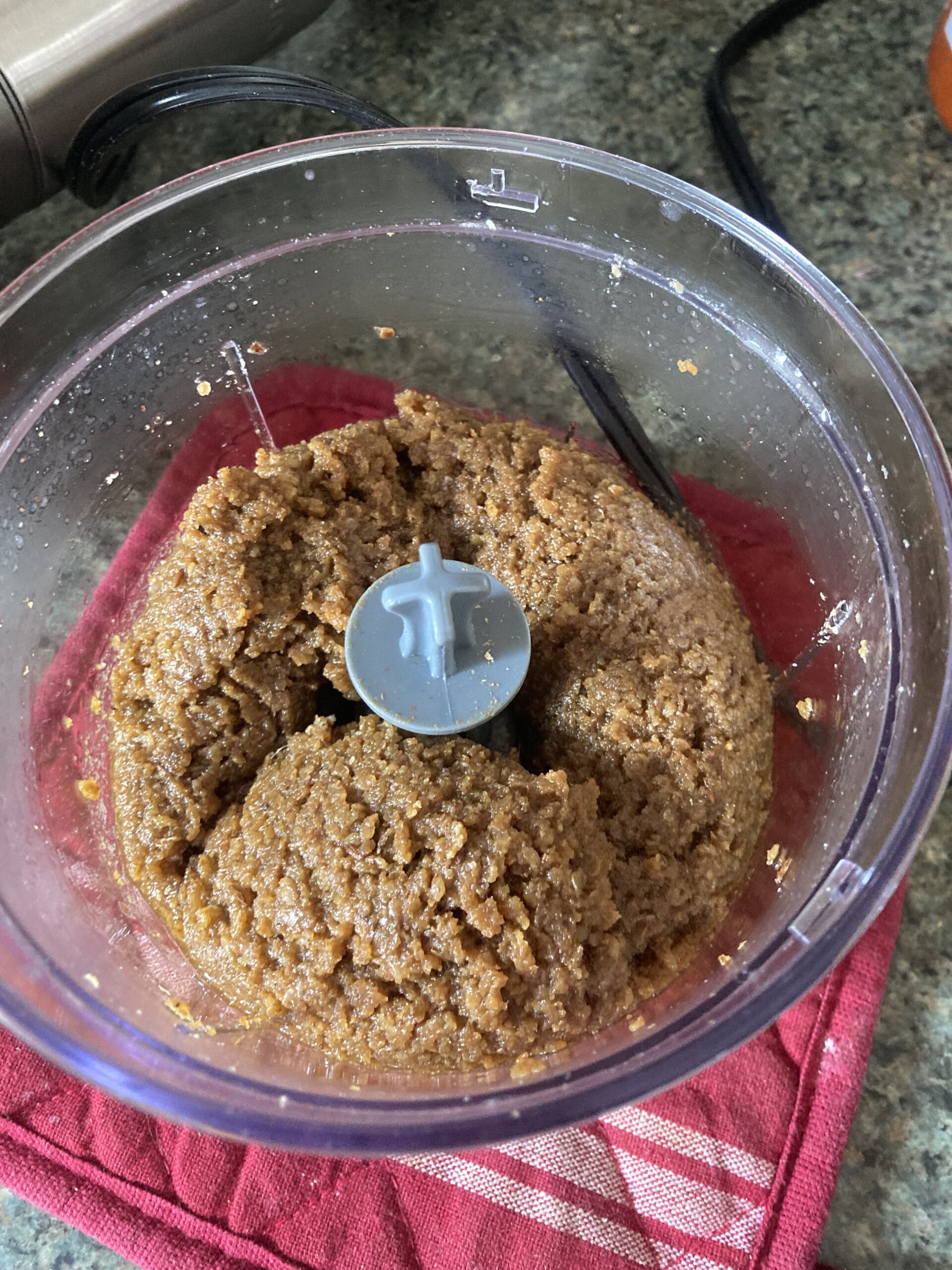Hummus from Scratch. 100%
Get the ingredients right; Get the process right; Get the right result. Every time.
The Basics and History of Hummus
History of Hummus. Hummus is a popular Middle Eastern dish with a rich history dating back centuries. The earliest recorded hummus-like dish dates back to ancient Egypt around 13th century BCE, where mashed chickpeas were combined with spices and oils. A similar dish known as “ḥummuṣ” was mentioned in cookbooks from medieval Arab cuisine. Over time, this culinary tradition spread across the Middle East, evolving into the hummus we know today.
Lebanese Influence: Lebanon is often credited as the place where modern hummus took shape. Lebanese-style hummus typically includes tahini, lemon juice, garlic, and olive oil, resulting in a creamy and tangy dip. This version is perhaps the most widely recognized and enjoyed around the world.
Israeli Variation: In Israel, hummus gained immense popularity and became a staple food. Israeli hummus often features garnishes like whole chickpeas, paprika, and chopped parsley. It is typically served as a side dish or a meal with various accompaniments.
Jordanian Variation: Throughout the Middle East, different countries and regions have their own unique variations of hummus. For instance, in Jordan, hummus may be prepared with ground meat and pine nuts
Palestinian Variation: Palestinian hummus is known for its creamy consistency and garnishes like olives and pickles.
Syrian Variation: Syrian hummus can be more lemony and spiced.
Palestinian Variation: Palestinian hummus is known for its creamy consistency and garnishes like olives and pickles.
Hummus from Scratch, Part 1 -- Ingredients
Note: I prefer to use a form of measurement and notation similar to Baker’s Percentages. That is to say, I start with a set amount of 1 main ingredient, and scale everything to that. When you see percentages (%), this is a percentage of that main ingredient, by weight.
Note: In this case, the entire recipe is scaled to about double the capacity of the processor I use. I remove half the tahini or tahini+garlic before continuing further, finishing one half, then going back to do the other. The amounts listed thereafter still refer to the full batch: 1000g sesame seeds, etc.
Required Ingredients:
- 1000g Sesame Seeds
- Unhulled: better, more complex flavor, but harder to deal with and will never be quite as creamy. It’s like the whole wheat of the hummus game. Personally, I think this trade-off is worth it, but you can chose your own path.
- Hulled: easier to process, maximizes silky smooth texture. Note: won’t require as much EVOO during the initial process.
- 0100g Olive or Sesame or Peanut or Sesame Oil
- If using Unhulled Sesame Seeds: Anywhere between 5% (50g) and 20% (200g) may be required for practicality, depending on your tolerance for tamping seeds down.
- If using Hulled Sesame Seeds: You may be able to get away with no added oil, or you may add up to ~10% (100g).
- 0100g Lemon Juice
- Starter amount, you’ll probably want more
- Yeah, fresh-squeezed lemons are way better than juice, but I’ve found that the local foods co-op usually has a high-quality lemon juice that’s 95% as good, easier, cheaper, and way less perishable.
- Up to 250g across the whole amount, according to preference.
- 0750g Chickpeas (Garbanzo Beans)
- Measured as cooked, shoot a little low for a nuttier hummus
- See Part 2: Process for chickpea secrets
- 1 to 4 heads roasted garlic, obviously no skins
- Salt – I’ve been meaning to weigh this since half a dozen batches ago. Do it to taste, add throughout the recipe, ideally use non-iodized salt.
- Aquafaba or water as needed, ice cubes may be useful if the mix is warming up. Don’t be afraid to toss things in the freezer for a few minutes, but definitely don’t forget about it. Ideally, cover. Bonus points if you freeze the Aquafaba into little cubes ahead of time. These have other uses, too!
Optional Ingredients:
- Roasted Peppers – Habanero, Jalapeno, Poblano, etc
- 3 habanero and 2 jalapeno for this quantity is a bit aggressive in a good way; seeds-in for more spicerier. I don’t include the seeds, personally, because they’re just another unnecessary texture variable.
- Roasted Red Onion
- Roasted Carrot
- Roasted whatever, really
- Raw red onion – I like the tangy contribution, kinda adds depth to the slightly one-dimensional lemon juice
- Flavor/Spice Discussion:
- Cumin
- Chili Powders
- Sumac
- Coriander
- Smoked Paprika (mild paprika is barely worth talking about, IMO)
- Parsley – fresh or dried
- Za’atar blend
Hummus from Scratch, Part 2 -- Process
1. Prepare the Tahini
- You may optionally roast the sesame seeds before processing them; this adds a lil extra toasty note to the tahini, and thus the final product. Roast at 375 for ~15 minutes, shake it up halfway through.
- Wait for it to cool before processing. Processing will add enough heat, without carrying over the oven heat as well.
- Combine sesame seeds, whichever oil you chose, and salt in your food processor or blender.
- Process / grind / mortar-and-pestle / whatever you’ve got until it starts gettin’ a bit like peanut butter. I use the Cuisinart Sous Chef 12 cup, myself, and find it works well. Their 16 cup one would probably be great too. Either way, you’ll want something fairly capable.
- You’ll probably have to scrape down the sides a few times. This is really the limiting factor to reducing the oil added. If you’ve got infinitely high patience, you can use infinitely low added oil.
- The specified oil ratio seems to yield a good blendy consistency that doesn’t overheat the blender or the mixture too much, and helps keep the mixture in contact with the blades, avoiding frequent tamping/scraping. Your mileage may vary!
**Texture Matters** Don’t move on from Step 3/4 until you’ve got a solid paste with very little granularity. You may need to stop and let the mixture and/or machine cool.
**If Splitting Batches** Tare the processor bowl w/ blade before adding any ingredients, so you can remove half the mixture later with some measure of precision. This is a limitation imposed by my personal food processor size.
2. Let’s Talk Garlic
- If roasting, you can roast garlic as a full bulb, or you can pre-emptively remove the shell. If you do chose to remove the shell, you may wish to cover the skillet/whatever in the oven, or the garlic will have a tendency to dry. I recommend roasting in the whole bulb.
- If you roast them as a whole bulb, the woody nubs will mostly stay behind, but if you remove the cloves beforehand, you should cut those bits off.
- Generally, you wanna go low and slow for this. 350 or 375 for ~20-30 minutes.
- Having finished preparing the tahini (above), you can start adding the roasted garlic. Obviously, no skins or woody nubs.
- Get the garlic fully integrated before moving on to the next step.
**Depending on size of batch and food processor, remove half the mixture at this point**
**Quantities going forward are for the complete, full batch, non-cut, amounts**
3. Flavorants — anything that’ll mix well with oil, really
- At this point, it’s time to get some flavors in there. Just about anything, at this point, could make sense — see Part 1 for ingredient suggestions, or Part 3 for variations.
- Speaking of, not a bad idea to bloom/temper the spices in a skillet real quick. Either way, it’s probably helpful to get the spices blended in with the oil before the water-based ingredients go in, and especially helpful with particle sizes if you’re not grinding the spices down beforehand
- This step doesn’t have to take all that long. Just a minute or two of processing. Flavor should be too intense at this point, it’ll dilute down later with the chickpeas.
4. Drop Some Acid
- Begin blending in your chosen acid. You’re building an emulsion between the oil-rich tahini and the acid. This will help to bind the ingredients together and create a cohesive mixture.
- The emulsion process is essential for achieving the desired consistency and flavor balance when making hummus from scratch. As the ingredients are blended together, the starches from the chickpeas and the fats from the tahini and olive oil combine with the lemon juice to create a creamy and homogenous mixture. This emulsification process is what gives hummus its characteristic smooth and velvety texture.
- Start adding lemon juice (50g for this step) and, as needed, aquafaba. Ideally, stream it in through the lid hole at a slow/moderate pace. The mixture will thicken as the lemon juice incorporates, so the aquafaba may be needed to keep it mobile. It’s emulsifying, very exciting.
- After a while, you should have a mixture that tastes a bit too lemony, has too much spice business happening, is slightly thin but not at all runny, has lightened in color substantially, and is smooth in texture.
5. Finally, the Chickpeas
- Now we can start adding the cooked chickpeas. This is the final major ingredient addition.
- Let’s talk about the chickpea prep:
- Soak in water and baking soda, ~2 tsp per dry pound, overnight 18 or more hours
- I really do think starting from dehydrated, dried beans is the way to go. It’s both great value and produces objectively the best result. Win/Win.
- Though, Kenji Lopez-Alt says you can get the same effect with salt. The important thing is to weaken the pectin in the shells during the soaking phase.
- Many guides say you should peel the skins. As long as you include baking soda (or salt), you just don’t need to bother because the dissolves the chitin, and the cooking process handles the rest.
- Even if you are gonna remove the skins, still use the baking soda, it helps a lot. Many guides suggest adding the baking soda while the beans cook, but I do think it’s more effective and less likely to be noticeable in the taste, if you do it during the soak.
- Or, if you’re using canned beans, the guides sometimes suggest a quick pan-fry w/ baking soda. Honestly, while this does work, it’s just too much squeeze for too little juice, y’know?
- Rinse well before cooking, otherwise you might end up w/ a metallic flavor
- In a standard covered saucepan, expect something like 30 minutes at a soft boil and ~2-3 hours at a super gentle simmer. Stir, scraping the bottom, especially near the end, to avoid sticking and burning
- The goal is to achieve a thick liquid, a lil thicker than gravy, a lil thicker than pancake batter, , and have chickpeas that are thoroughly cooked and starting to break down.
- You can get extra liquid thiccness by removing some of the chickpeas a bit early, for salads or pan frying as a side or whatever you feel like.
- Soak in water and baking soda, ~2 tsp per dry pound, overnight 18 or more hours
- Hoookay, it’s finally chickpea o’clock.
- ****this is not checked; conflicting notes; go slow to avoid overdoing it****
- Add 1 ½ cups of chickpeas (200g?),
- “500-1000g chickpeas – measured as cooked, shoot a little low for a nuttier hummus”
- ****this is not checked; conflicting notes; go slow to avoid overdoing it****
6. Bringing It All Together
- Add more chickpeas, aquafaba, lemon juice, and salt as needed for texture and flavor.
- Can’t remove aquafaba, so if it’s too thick and also not lemony enough, adjust w/ lemon first.
- Blend AF again, until it’s smooth. It almost kinda ‘sets’ in the fridge, so you’re gonna want it looser than you’d expect. Think: soft/medium peaks. If you tipped the container, it’d pour out, somewhat viscously.
- Finally, the acidic flavor dulls after a day or two, so consider adding a little extra.
Hummus from Scratch Part 3: Variations
Once you throw the concept of ‘traditional’ out the window, you can really lose the plot, go ballz to the wallz, get wild with it, etc etc. Go wild!
I really, truly, do mean hummus from scratch, though, even more down here than up there. Some of these variations take months!
Variation 1 — Add Cinnamon, Lemon and Ginger
Variation 2 — Roasted Beet, or, Humborscht
Variation 3 — Kombucha and/or Pellicle
Another lemon-for-blank exchange. Say, add kombucha instead of lemon juice, you could make it both cheaper and more healthy, simultaneously! Make sure it’s super ripe — if using a conventional kombucha fermentation cycle, we’re aiming for ~45 days. If using continuous brew fermentation cycle, refer to the Kombucha web page.
You could, also, go way too far the hell into it, and add some of that thicc pellicle. The thiccer, the better. Make sure if doing this that you don’t overdo the liquid content — pellicle is very efficient at liquid retention, possibly too efficient. I’ve done this to a few batches, substituting the pellicle for the chickpeas, and it’s pretty unnoticeable until it’s replacing like 25% of the chickpeas.
Variation 4 — Sprouting / Lacto-Fermentation
This one’s experimental as shit. Make sure you sign the waiver, don’t feed it to your kids, etc etc
Variation 5 — That’s right, Chocolate. Fudge. Hummus
You’ll omit the garlic and onion, unless you’re insane. Same with many of the spice options, just be aware that they could be a mistake.
Troubleshooting
Acrid Flavor? Acrid flavor? Probably burned something, potentially during the processing step. The mixture will heat up as you go, so take breaks, and consider keeping some ingredients refrigerated until you add them.
Oily Flavor? Might have too much oil, bud.
Gritty, but not in an orange mascot kinda way?
2nd text box
Frequently Asked Questions
- Technically I think you’re supposed to use sesame oil for the tahini step, then EVOO for the hummus step, so keep an eye out for a too-strong olive-oily flavor.
- This wasn’t a question, it was a statement.
- Why even bother making hummus from scratch? Why not just buy it at Trader Joe’s like everyone else?
- It’s cheaper, healthier, more fun, more custimizable, interesting, definitively more delicious — whatever reasons you want! But shit, if that doesn’t do it for you, then by all means, buy it premade.
- Is making hummus from scratch healthier?
- Absolutely! Though of course, details — if you double down on the tahini because you prefer the nutty flavor, well, now you’ve made it substantially more calorie-dense.
- Is making hummus from scratch cheaper?
- Almost certainly! Exactly how expensive it’ll be depends on the ingredients, whether they’re organic, and whether you buy them pre-made or as base ingredients.
- What about… valid spellings?
- Hummus, Humous, Hummos,





